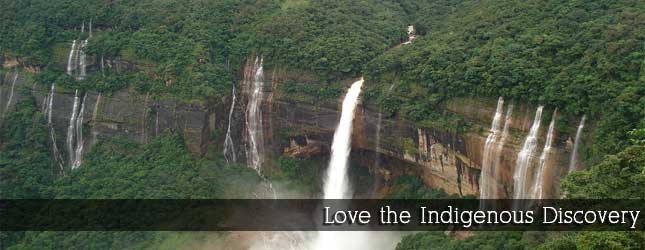 |
Assam - land of blue hills / land of tea production
Assam, a northeast Indian state, is lying in the south of the eastern Himalayas and is blessed with immense beauty of nature. Comprising vast natural treasure, the state is famous for Assam tea, huge petroleum resources, its silk and its wealthy biodiversity.
The state has been famed for successful conservation of the one-horned Indian rhinoceros which was close to extinction. The state has also protected the tiger and a host of bird species. It has also provided one of the last wild abode to the Asian elephant. Due to all this, Assam has been gaining huge popularity as a wildlife tourist destination. The state’s Kaziranga and Manas wildlife sanctuaries have been declared as the World Heritage Sites.
The natural beauty of Assam is reflected through the Brahmaputra and the Barak river valleys as well as the Karbi Anglong and the North Cachar Hills with an area of 30,285 sq miles (78,438 sq km). Enclosed by six of the other seven Northeast Indian states, Assam also shares international borders with Bhutan and Bangladesh. It also shares similarity in cultures, peoples and climate with other parts of South-East Asia.
The state has been famed for successful conservation of the one-horned Indian rhinoceros which was close to extinction. The state has also protected the tiger and a host of bird species. It has also provided one of the last wild abode to the Asian elephant. Due to all this, Assam has been gaining huge popularity as a wildlife tourist destination. The state’s Kaziranga and Manas wildlife sanctuaries have been declared as the World Heritage Sites.
The natural beauty of Assam is reflected through the Brahmaputra and the Barak river valleys as well as the Karbi Anglong and the North Cachar Hills with an area of 30,285 sq miles (78,438 sq km). Enclosed by six of the other seven Northeast Indian states, Assam also shares international borders with Bhutan and Bangladesh. It also shares similarity in cultures, peoples and climate with other parts of South-East Asia.
How to Reach
- Air: Apart from the major Borjhar Airport, 25km from Guwahati, Assam airports at Silchar, Dibrugarh, Tezpur, Jorhat and North Lakhimpur.
- Rail:You can get direct train services from Calcutta, New Delhi, Mumbai, Chennai, Bangalore, Cochin and Trivandrum to Guwahati, the rail hub of Assam.
- Road:Assam is easily accessible by road from all the neighboring states of West Bengal, Meghalaya, Manipur, Mizoram, Nagaland and Arunachal Pradesh.
Best Time to Visit
- Summers remain here between March and June, with temperature never going beyond 35°C to 38°C.
- Monsoon pours the region between late-June to September.
- Winters stays in Arunachal Pradesh from late-October to late-February, with minimum temperature going down to 6°C-8°C.
The best time to visit Assam is November to May when the weather remains pleasant with cool winds in the region. In March to May, you can enjoy the blooming orchids and the famous Bihu (harvest festival) in the state.
Major Attractions in Assam
- Guwahati: The largest city of Assam and the largest metropolitan area in north-eastern India, Guwati is one of the fastest developing cities in India. One of the major cities in East India, Guwahati is often referred as the ‘gateway of the North East Region’.
- Assam State Museum: Located in the southern end of Dighali Pukhuri tank in the centre of Guwahati city, Assam State Museum was established by the Kamarupa Anusandhan Samiti (Assam Research Society) in 1940. Founded by Late Kanklal Baruah, the museum was taken over by the State Government in the year 1953.
- State Zoo-cum-Botanical Garden: The Assam State Zoo cum Botanical Garden, popularly known as Guwahati Zoo, is the largest of its kind in the North East Region. Located within the Hengrabari Reserved Forest at Guwahati, the zoo houses about 895 animals, birds and reptiles representing about 113 species of animals and birds from around the world.
- Srimanta Sankardeva Kalakshetra: A cultural institution in the Panjabari area of Guwahati, Srimanta Sankaradeva Kalakshetra consists of a cultural museum, library and various facilities for preserving, demonstrating and performing cultural items, along with a children's park.
- Chandubi Lake: A natural lake located in Kamrup District of Lower Assam at a distance of 64 kilometers from the Guwahati city, Chandubi Lake is a calm and peaceful location covered by deep forest, tea garden and small and distinct villages.
- Sualkuchi: The world's largest weaving villages often referred as the ‘Manchester of the East’.
- Hajo: Known for three religions meet – Hinduism, Islam and Buddhism.
Fairs and Festivals
- Bihu
- Me-Dum-Me-Phi
- Baishagu
- Ambubachi Mela


